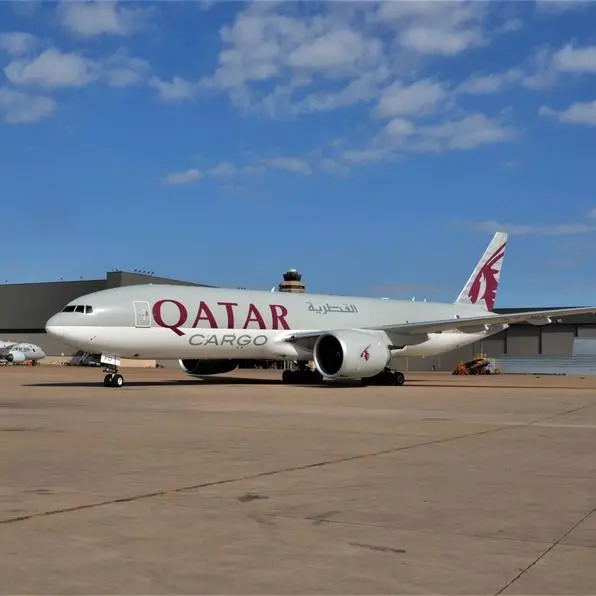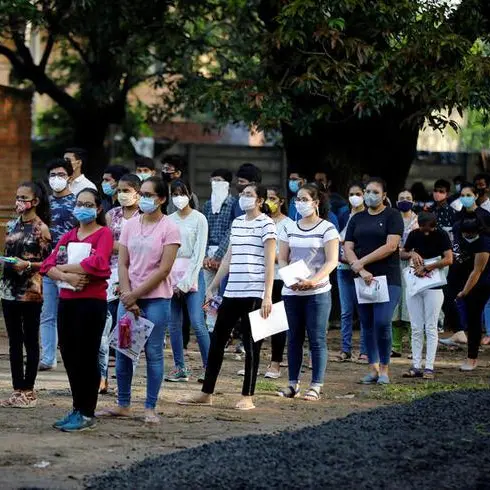PHOTO
Fighting hunger has become a harder task in the Near East and North African region due to conflict and protracted crisis, according to a FAO report on food security in the region, writes Sherine Abdel-Razek
According to the Regional Overview of Food Insecurity in the Near East and North Africa report issued recently by the UN's Food and Agriculture Organisation (FAO), the Near East and North African region (NENA) is the only region worldwide where the overall hunger situation has deteriorated during the last two decades.
While 15 countries out of 19 in the region have met the Millennium Development Goals (MDG) hunger target of halving the percentage of people suffering from undernourishment in the population by 2015, the region as a whole has neither achieved this target nor has it achieved the World Food Summit (WFS) target of halving the absolute number of undernourished people.
The number of chronically undernourished has doubled in the period from 1990-1991 to 33 million people in 2014-2016, and the percentage of undernourished has increased from 6.6 per cent to 7.5 per cent in the same period.
The political instability that has played an important role in the region over recent years has been responsible for at least part of the problem, with 12 NENA countries having witnessed at least one form of instability, including civil unrest, wars or protracted crises.
The Syrian crisis has left 13.6 million people, 9.8 million inside Syria and 3.8 million refugees, in need of food assistance. The cumulative loss in GDP for the country from 2011 to 2013 has been estimated at approximately $70.67 billion, and GDP in 2013 was less than half what it would have been without the conflict.
As an economy moves into "a conflict economy," the report states, productive sectors and trade and employment collapse, while inflation surges. Food insecurity, poverty and extreme poverty deepen as a result.
Elsewhere in the region, the percentage of undernourished in Iraq rose from eight to 23 per cent, and one out of every four people is considered to be undernourished in Yemen, which also has the highest incidence of poverty, unemployment and child malnutrition in the region.
24 million Yemenis required humanitarian assistance at the beginning of 2015. While political instability exacerbated the country's problems, many of the region's socio-economic features have also contributed to them. The over-dependence on food imports makes the countries of the region highly vulnerable to volatility in international food prices and to global food supply restrictions.
Despite the region's success in increasing its production of some food supplies like cereals and milk, it is still the largest net importer of cereals in the world, with over half of its cereal consumption originating from other regions.
The increasing demand for food, and subsequently reliance on imports, will also increase due to the high population growth rate of two per cent annually, pushing population projections to 600 million in 2050.
Added to this is the fact that the NENA region is the most water-scarce in the world. Per capita renewable water availability has decreased by two-thirds over the last 50 years and is now at a level as low as 10 per cent of the world average, limiting the possibility of expanding cultivated land.
Another problem is the high rate of food loss and waste due to unsuitable storage techniques. Egypt, for example, loses 13-15 per cent of available cereals between harvesting and final consumption.
Fisheries are one bright area in the report, with fisheries production increasing dramatically over the last two decades. Total capture fisheries production (marine and inland) in the region has increased steadily from less than 0.5 million tons in the 1980s to the recent level of nearly 3.5 million tons.
As for livestock, the NENA region has 98 million livestock units, 80 per cent of which are concentrated in only six countries - Algeria, Egypt, Iran, Mauritania, Morocco and Sudan. However, there is significant intraregional livestock and agricultural trade, and informal imports of live animals between countries of the region take place especially during religious events and ceremonies, such as the Hajj and Umra.
Challenges to the livestock sector include recurring droughts, desertification, the degradation of land worsened by climate change, and conflicts and protracted crises.
While NENA as a whole is a net importer of agricultural commodities, different sub-regions and individual countries can have comparative advantages for certain agricultural products. According to the report, the region is second only to Latin America and the Caribbean as a net exporter of tomatoes and citrus fruits, for example. It is also the third largest exporter of olive oil, after Europe and Central Asia.
At the individual country level, Egypt and Morocco are major exporters on global markets of citrus fruits while Jordan is among the leading exporters of tomatoes, and Sudan has great potential in live animals and meat and to further step up exports of sesame, sorghum and sugar. Egypt alone saw a tenfold increase in fruit and vegetable exports between 2000 and 2011.
Strengthening regional cooperation is crucial for tapping into the regional food trade potential and improving food security and nutrition in regional countries that are part of a large number of sub-regional integration agreements, such as the Greater Arab Free Trade Area, the Agreement for the Facilitation and Promotion of Intra-Arab Trade, the Council for Arab Economic Unity (CAEU), the Gulf Cooperation Council (GCC), and the Arab Maghreb Union (AMU).
Intraregional trade in agriculture is generally low as a share of total agricultural trade in the region, but this share has increased over the last decade. Partial data show that 67 per cent of NENA agricultural exports are destined for countries within the region, while only 14 per cent of its agricultural imports come from within the region.
Improving access to food requires reducing poverty, however. The poverty rate is above 10 per cent on average in the region, with Egypt's rate of 25 per cent coming low down the list when compared to 34 per cent in Yemen, 42 per cent in Mauritania and 46 per cent in Sudan.
Upgrading the effectiveness of social safety nets will be a prerequisite for meeting this goal, the report says. Most countries in the region have introduced social protection programmes, including food and fuel subsidies, conditional cash transfers and medical care.
The report points out that subsidies have been shown to be both costly and inefficient, however, with better-off sections of the population also benefitting from them. A cost-benefit analysis of the different social programmes applied in different countries in the region has shown that for each dollar spent on cash transfers, the poverty gap reduction obtained is 0.24, 0.53 and 0.29 per cent for Iraq (2006), Jordan (2010) and Yemen (2005), respectively.
This reduction is lower in the case of in-kind transfers. In Egypt, for each dollar spent on in-kind transfers, the poverty gap is reduced by 0.19 per cent, while it is reduced by 0.29 per cent with cash transfers.
The maximum utilisation of food to guarantee better nutrition is another challenge for the region, which suffers from a "triple burden of malnutrition," the report says, meaning that under-nutrition coexists with over-nutrition and micro-nutrient deficiencies. For the region as a whole, chronic malnutrition among children, as measured by stunting, stands at 24.3 per cent in Egypt, while it has also witnessed a remarkable increase in dietary caloric intake in recent years and at the same time high levels of stunting.
Meanwhile, the prevalence of obesity has soared in the last two decades, with five NENA countries coming among the world's top ten in the prevalence of obesity due to their dependence on high-calorie carbohydrates.
In diets consisting mainly of staple cereals or root crops, says the report, it is also possible to consume enough calories without consuming sufficient micro-nutrient-rich foods such as fruit, vegetables and animal source proteins.
"This is reinforced by food habits (drinking tea with food) and dietary patterns. For example, legumes and cereal grains, which are the main staples of poor households, often contain 'anti-nutrients' which inhibit the absorption of essential micro-nutrients, especially iron and zinc," it explained.
© Al Ahram Weekly 2015












